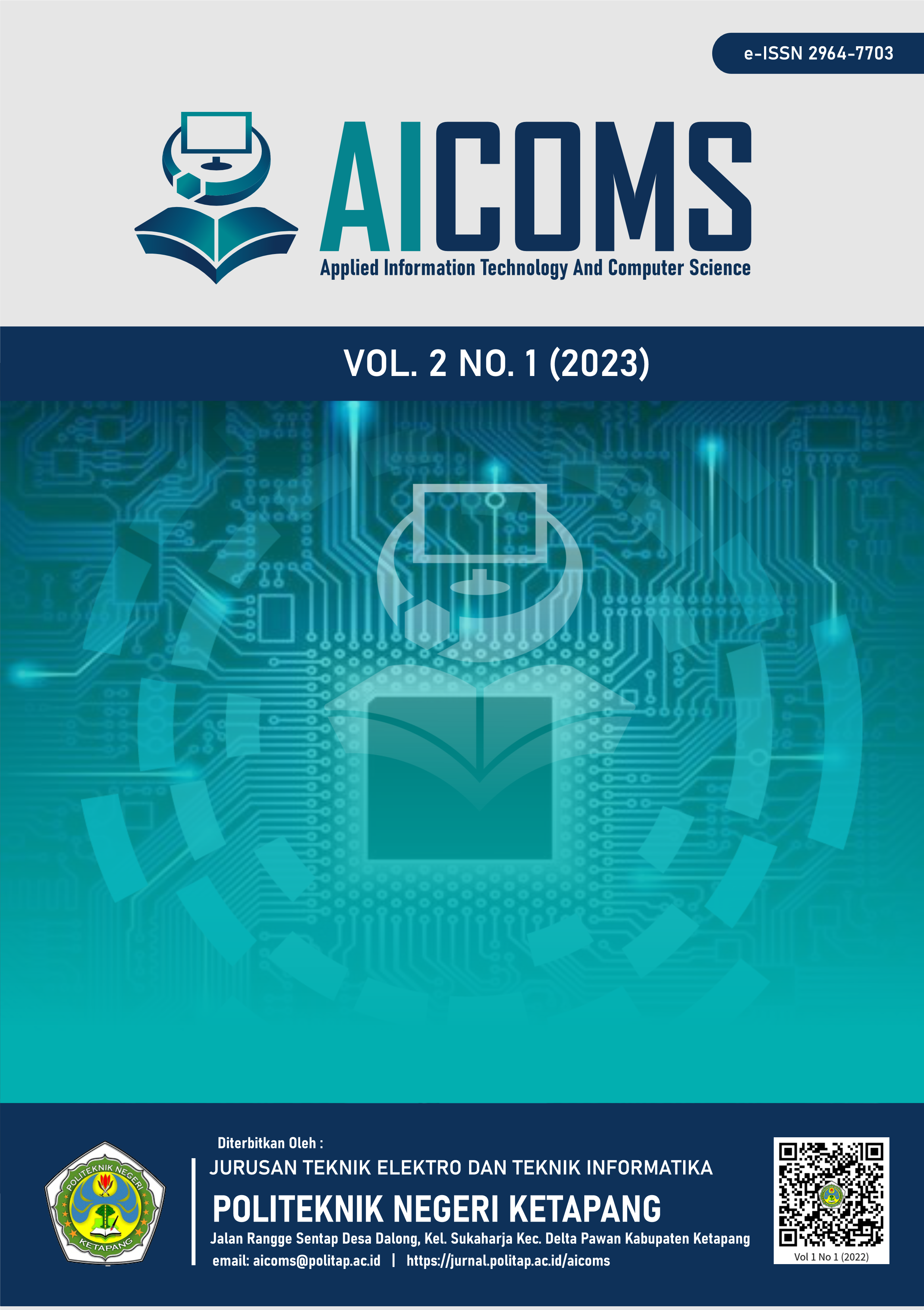Twitter Sentiment Analysis Using the Naive Bayes Algorithm: A Case Study of Indosurya Savings and Loans Cooperative
 https://doi.org/10.58466/aicoms.v2i1.1784
https://doi.org/10.58466/aicoms.v2i1.1784
Keywords:
Sentiment Analysis, KSP Indosurya, Naïve Bayes, R Studio, TwitterAbstract
The case of KSP Indosurya has once again attracted public attention after the alleged perpetrator, who is also the founder of the cooperative, was acquitted by the Chief Judge of the West Jakarta District Court of all charges. The ruling stated that while the defendant was proven to have committed the alleged acts, they did not constitute a criminal offense but rather a civil matter. This verdict sparked widespread public reaction and became a trending topic on Indonesian Twitter. Therefore, this study was conducted to identify and classify public sentiment regarding the KSP Indosurya case using the Naïve Bayes algorithm. The results show that negative sentiment dominated, leading to the conclusion that public sentiment on Twitter in Indonesia toward the KSP Indosurya case is predominantly negative. This conclusion is based on sentiment analysis of 1,200 data points using the Naïve Bayes method.
References
S. B. Y. G. C. Purba, “Kriteria Proposal Perdamaian PKPU yang Cukup Terjamin Dalam Kasus KSP INDOSURYA CIPTA,” vol. 4, no. 3, pp. 607–616, 2022.
Britney Azzahra Wiguna and Yeti Sumiyati, “Pelayanan Koperasi Simpan Pinjam Kepada Masyarakat (Menurut UU Cipta Kerja & PP No. 7 Tahun 2021),” Bandung Conf. Ser. Law Stud., vol. 2, no. 1, pp. 208–214, 2022, doi: 10.29313/bcsls.v2i1.703.
P. S. M. Suryani, L. Linawati, and K. O. Saputra, “Penggunaan Metode Naïve Bayes Classifier pada Analisis Sentimen Facebook Berbahasa Indonesia,” Maj. Ilm. Teknol. Elektro, vol. 18, no. 1, p. 145, 2019, doi: 10.24843/mite.2019.v18i01.p22.
M. Kartika, S. Saepudin, and D. Gustian, “Analisis Sentimen Dampak Covid-19 Terhadap Pembatalan Keberangkatan Ibadah Haji Pada Tahun 2020,” J. Sains Komput. Inform. (J-SAKTI, vol. 5, no. 2, pp. 964–972, 2021.
R. W. Samsir, Ambiyar, Unung Verawardina, Firman Edi, “Analisis Sentimen Pembelajaran Daring Pada Twitter di Masa Pandemi COVID-19 Menggunakan Metode Naïve Bayes,” J. Media Inform. Budidarma, vol. 5, no. 1, pp. 157–163, 2021, doi: 10.30865/mib.v5i1.2604.
M. R. Fauzi, R. A. Pratama, P. Laksono, and P. Eosina, “Analisis Big Data Sentimen Konsumen UMKM Sektor Kuliner Menggunakan Multi-Label K-Nearest Neighbor,” J. Tek. Inform., vol. 9, no. 1, pp. 9–20, 2021, doi: 10.32832/kreatif.v9i1.3587.
M. I. Fikri, T. S. Sabrila, and Y. Azhar, “Perbandingan Metode Naïve Bayes dan Support Vector Machine pada Analisis Sentimen Twitter,” Smatika J., vol. 10, no. 02, pp. 71–76, 2020, doi: 10.32664/smatika.v10i02.455.
F. A. D. Aji Prasetya Wibawa, Muhammad Guntur Aji Purnama, Muhammad Fathony Akbar, “Metode-metode Klasifikasi,” Pros. Semin. Ilmu Komput. dan Teknol. Inf., vol. 3, no. 1, pp. 134–138, 2018.
A. Muzaki and A. Witanti, “Sentiment Analysis of the Community in the Twitter To the 2020 Election in Pandemic Covid-19 By Method Naive Bayes Classifier Sentimen Analisis Masyarakat Di Twitter Terhadap Pilkada 2020 Ditengah Pandemic Covid-19 Dengan Metode Na I ̈ Ve Bayes Classifier,” J. Tek. Inform., vol. 2, no. 2, pp. 101–107, 2021.
E. Manalu, F. A. Sianturi, and M. R. Manalu, “Penerapan Algoritma Naive Bayes Untuk Memprediksi Jumlah Produksi Barang Berdasarkan Data Persediaan dan Jumlah Pemesanan Pada CV. Papadan Mama Pastries,” J. Mantik Penusa, vol. 1, no. 2, pp. 16–21, 2017.
N. Ayunandita and S. Dadi Riskiono, “Permodelan Sistem Informasi Akademik Menggunakan Extreme Programming Pada Madrasah Aliyah (Ma) Mambaul Ulum Tanggamus,” J. Inform. dan Rekayasa Perangkat Lunak, vol. 2, no. 2, pp. 196–204, 2021, [Online]. Available: http://jim.teknokrat.ac.id/index.php/informatika
S. N. J. Fitriyyah, N. Safriadi, and E. E. Pratama, “Analisis Sentimen Calon Presiden Indonesia 2019 dari Media Sosial Twitter Menggunakan Metode Naive Bayes,” J. Edukasi dan Penelit. Inform., vol. 5, no. 3, p. 279–285, 2019, doi: 10.26418/jp.v5i3.34368.
R. Y. Hayuningtyas, “Penerapan Algoritma Naïve Bayes untuk Rekomendasi Pakaian Wanita,” J. Inform., vol. 6, no. 1, pp. 18–22, 2019, doi: 10.31294/ji.v6i1.4685.
R. H. Bagus Muhammad Akbar, Ahmad Taufiq Akbar, “Analisis Sentimen dan Emosi Vaksin SINOVAC Pada TWITTER Menggunakan NAÏVE BAYES dan VALENCE SHIFTER,” J. Teknol. Terpadu, vol. 7, no. 2, pp. 83–92, 2021.
Downloads
Published
How to Cite
Issue
Section
License
Copyright (c) 2023 Ornensya sembiring, Elma Rulfin Tiara Kiu , Khairun Nisa Meiah Ngafidin

This work is licensed under a Creative Commons Attribution-NonCommercial-ShareAlike 4.0 International License.





